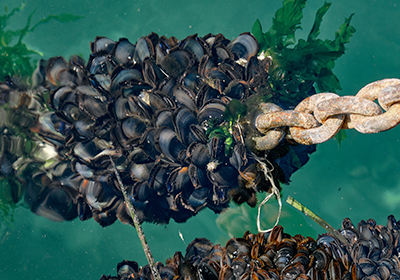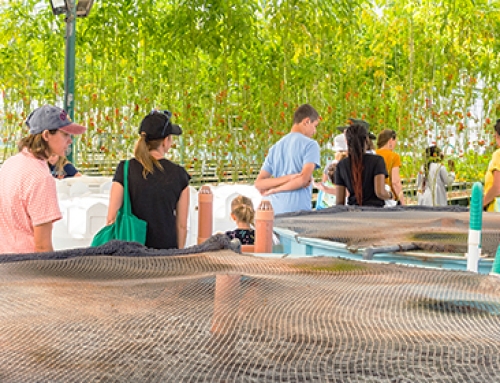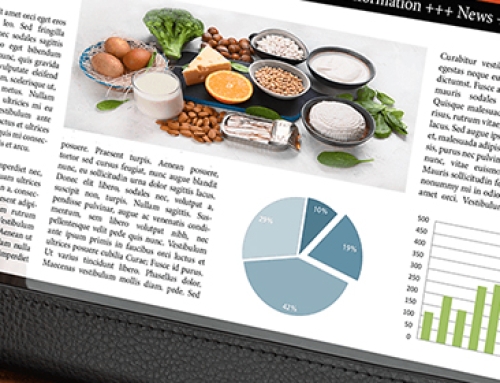Allocation of over 1 million euros by the Italian Ministry of Health for research on the impact of anthropization and climate change on public health.
 The Istituto Zooprofilattico Sperimentale delle Venezie (IZSVe) has been awarded two objective-oriented research projects financed by the Italian Ministry of Health on risks related to the ingestion of microplastics and tetrodotoxins through mollusc consumption, garnering an allocation of 900,000 euros. This is accompanied by a starting grant of 130,000 euros, bringing the total funding to over 1 million euros.
The Istituto Zooprofilattico Sperimentale delle Venezie (IZSVe) has been awarded two objective-oriented research projects financed by the Italian Ministry of Health on risks related to the ingestion of microplastics and tetrodotoxins through mollusc consumption, garnering an allocation of 900,000 euros. This is accompanied by a starting grant of 130,000 euros, bringing the total funding to over 1 million euros.
IZSVe was notified of this important result by the Ministry, which approved the final ranking of biomedical studies presented by researchers from National Health Service (SSN) facilities. A total of 261 research projects were admitted to the 2021 Objective-Oriented Research Call, with a total funding budget in excess of 100 million euros.
“We are very satisfied with the Ministry of Health’s acknowledgement of the quality of our scientific research – commented the Director General, Antonia Ricci. Mollusc farming and aquaculture constitute a strategic sector for food security, a topicin which our Institute has been engaged for many years. Guaranteeing the sustainability and safety of fish resources is a challenge for public health as a whole”.
The two projects, PLASTI@Risk and STOPTTXs, come under the umbrella of objective-oriented research calls published each year by the Ministry of Health to achieve SSN policy objectives. The Principal Investigator for the project on microplastics is Dr. Carmen Losasso, biologist, heading the Microbial Ecology and Microorganism Genomics Laboratory, while the study on tetrodotoxins will be led by Dr. Giuseppe Arcangeli, veterinary, director of the National Reference Centre for Fish, Crustacean and Mollusc Pathology.
Besides these two projects, IZSVe has also been awarded a Starting Grant, , on emerging risks for humans deriving from interspecific circulation of Orthoreovirus among pets. This will enable junior biotechnology researcher, Mery Campalto, to work on this study at the IZSVe for three years. These projects represent the achievement of a very ambitious target with the funding rate being less than 30%.
PLASTI@Risk
 The aim of PLASTI@Risk is to conduct an exhaustive assessment of the microbiological risk for human health associated with exposure to ingested microplastics (MPs) via the consumption of bivalve molluscs, with a view to identifying risk mitigating strategies.
The aim of PLASTI@Risk is to conduct an exhaustive assessment of the microbiological risk for human health associated with exposure to ingested microplastics (MPs) via the consumption of bivalve molluscs, with a view to identifying risk mitigating strategies.
“The aim of the project is to provide a broad, realistic picture of the microbiological risks associated with exposure to microplastics through bivalve mollusc consumption,” explains Carmen Losasso, the project’s Principal Investigator.
“The goal is to propose strategies for mitigating the risk deriving from both currently circulating microplastics and bioplastics expected to circulate in the future following application of EU regulations on the use of plastics”.
Microplastics, introduced by anthropization, are an emerging risk for food safety. The transfer of pathogens and genes conferring resistance to antimicrobials from the anthropized environment to the food chain through the circulation of microplastics represents a new risk scenario for food safety, paving the way for new routes for pathogen transmission and/or promoting the circulation of new pathogens or variants of antimicrobial resistance.
STOPTTXs
 Tetrodotoxins (TTXs) are potent neurotoxins that can contaminate bivalve molluscs and the ingestion of contaminated foodstuffs can seriously impair the central nervous system.
Tetrodotoxins (TTXs) are potent neurotoxins that can contaminate bivalve molluscs and the ingestion of contaminated foodstuffs can seriously impair the central nervous system.
Toxic events relating to the production of tetrodotoxins have been notified in bivalve molluscs in the Pacific area and, recently, due to climate change, in European seas, involving various countries, including Italy.
“The primary objective of STOPTTXs is to reduce the risk of contamination by tetrodotoxins in live bivalve molluscs intended for human consumption,” states the Principal Investigator, Giuseppe Arcangeli.
“We will adopt a multisectorial approach based on a combination of early warning systems, innovative diagnostic tools, and a gain of the awareness food sector workers about this emerging problem forfood safety ”.
The production setting
The United Nations forecasts that by 2050 – when the global population is estimated to reach approximately 9.5 billion – feeding the world will require a 70% rise in food production. There is limited scope to exploit sectors such as agriculture, which are fraught with bio-sustainability issues. A response may possibly come from the aquatic domain. In recent years, a research process and investments are underway that view the sea as instrumental in mitigating land-based protein shortages. Since bivalves are at the base of the trophic pyramid, mollusc farming is undoubtedly an interesting bio-sustainable activity for this purpose.
Italy, with its annual 100,000-tonne output of molluscs, including mussels, clams and oysters, is the third producer in Europe (2020, Eurostat data), employing 3,713 people in 2019, corresponding to 78% of the entire national aquaculture sector (AMA data), and showing an upward trend. However, in the light of ongoing climate change and increasing environmental deterioration, the challenge of guaranteeing a safe, high quality product has in recent years become all the more urgent.
The presence, on the one hand, of new biotoxin species and, on the other, of materials of anthropic origin, as micro- and nanoplastics, are tasking researchers with the development of diagnostic systems to intercept critical periods related to toxic algae blooms as they arise; to establish how far bivalve molluscs are exposed to accumulate circulating plastics and resident bacteria and can subsequently free themselves through depuration processes; and whether they are toxic for the molluscs themselves and for the consumer.






![Which is better between wild-caught and farmed fish? [Video]](https://www.izsvenezie.com/wp-content/uploads/2024/01/which-better-wild-farmed-fish-video-500x383.jpg)
